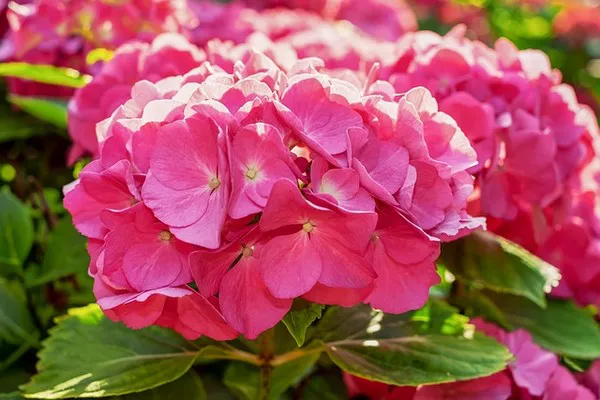Cats, known for their curious nature, often find themselves exploring the world around them, including the flora that adorns our homes and gardens. While many flowers can bring beauty and fragrance into our lives, not all are feline-friendly. Among the myriad of plants, there exists one silent danger – the most toxic flower to cats. In this comprehensive exploration, we delve into the potentially lethal consequences of floral encounters for our feline companions and shed light on the flower that poses the greatest threat.
Understanding Feline Sensitivity to Plants
Before identifying the most toxic flower to cats, it’s crucial to understand why certain plants can be harmful to our feline friends. Cats are obligate carnivores, and their digestive systems are not equipped to process certain toxins present in various plants. Additionally, cats often nibble on plants as a form of exploration or to aid their digestion, making them susceptible to ingesting harmful substances.
Many flowers contain compounds that, while harmless to humans, can be toxic to cats. These toxins can cause a range of symptoms, from mild gastrointestinal upset to severe organ failure, and in extreme cases, they can be fatal. Pet owners must be vigilant in recognizing potential dangers and creating a safe environment for their beloved cats.
The Lethal Bloom: Oleander’s Menace
Among the vast array of toxic flowers, one stands out as the most perilous for feline companions – the oleander (Nerium oleander). Native to regions with warm climates, oleander is a popular ornamental shrub prized for its vibrant, showy flowers and evergreen foliage. However, its alluring appearance conceals a deadly secret.
Toxic Components of Oleander
Oleander contains potent toxins called cardiac glycosides, including oleandrin and nerioside. These compounds affect the cardiovascular system, leading to irregular heart rhythms and, in severe cases, cardiac arrest. The entire plant, from its leaves to its flowers and sap, harbors these toxic substances, making every part of the oleander a potential threat to cats.
Symptoms of Oleander Poisoning in Cats
Recognizing the symptoms of oleander poisoning is paramount for prompt intervention. Cats exposed to oleander may exhibit signs such as vomiting, diarrhea, lethargy, drooling, and abdominal pain. As the toxins target the heart, more severe symptoms may manifest, including an irregular or slowed heart rate, difficulty breathing, and even collapse. Immediate veterinary attention is crucial if oleander poisoning is suspected.
Preventing Oleander Poisoning in Cats
Ensuring the safety of our feline companions involves proactive measures to prevent exposure to toxic plants like oleander. Consider the following precautions:
1. Identify and Remove Oleander Plants
The first step is to identify whether oleander is present in your home or garden. Check the landscaping around your property and the indoor plants within your home. If oleander is present, take immediate steps to remove it safely. Wear gloves to protect yourself from the toxic sap, and dispose of the plant in a sealed bag.
2. Choose Cat-Safe Alternatives
When selecting plants for your garden or home, opt for those that are non-toxic to cats. Numerous cat-friendly plant options exist, including catnip, catmint, and spider plants. Researching and choosing safe alternatives can help create an environment where your feline friend can explore without risk.
3. Educate Family Members and Guests
Ensure that everyone in your household is aware of the dangers posed by oleander and other toxic plants. Educate family members, guests, and anyone who may come into contact with your cat about the potential risks and the importance of maintaining a safe environment.
4. Monitor Outdoor Exploration
If your cat has access to outdoor spaces, monitor their exploration to prevent encounters with toxic plants. Consider creating a designated cat-friendly area with carefully chosen plants to minimize the risk of exposure to harmful flora.
5. Consult with a Veterinarian
If you are unsure about the safety of specific plants or suspect exposure to a toxic flower, consult with your veterinarian. They can provide guidance on creating a safe environment for your cat and offer advice on recognizing and addressing potential poisoning incidents.
Conclusion
In the intricate tapestry of nature, certain flowers pose a hidden threat to our feline companions. The oleander, with its enchanting blooms, stands out as the most toxic flower to cats, harboring cardiac glycosides that can have fatal consequences. As responsible pet owners, it is our duty to be vigilant, educated, and proactive in creating a secure environment for our furry friends.
By understanding the dangers associated with specific plants, such as oleander, and implementing preventive measures, we can ensure that our cats enjoy a safe and enriching environment. Choosing cat-friendly alternatives, removing toxic plants, and fostering awareness within our communities are essential steps in safeguarding our feline companions from the silent dangers that may lurk in our gardens and homes. Ultimately, the pursuit of a harmonious coexistence between cats and flowers necessitates knowledge, mindfulness, and a commitment to the well-being of our beloved pets.


